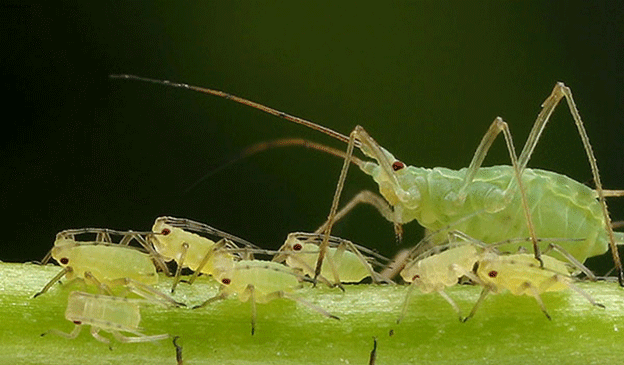Aphids have long plagued farmers and gardeners alike, acting as vectors for numerous deadly plant viruses that devastate crops like soy and cotton. However, a groundbreaking study led by Michelle Heck from the USDA’s Agricultural Research Service (ARS) suggests a novel strategy to combat these pests using the spike proteins from the very viruses they spread.
The Role of Spike Proteins in Virus Transmission
Spike proteins, which have gained widespread attention due to COVID-19, play a crucial role in the transmission of many viruses, including those affecting crops. Poleroviruses, for example, are transmitted by aphids and pose a significant threat to various crops, including those used in biofuel production and cotton.
Michelle Heck, a research molecular biologist at the ARS, used X-ray crystallography to map the spike protein structure of these viruses. This detailed understanding enabled her to develop a new method to prevent aphid-borne virus transmission. “Using X-ray crystallography, we know what that spike protein looks like on that virus,” Heck explained. “That was a major breakthrough because these viruses have been studied for a very long time, since the 1960s, and no one has been able to look at the structure.”
An Ingenious Approach: Free Spike Proteins
Heck and her team, including former graduate student Jennifer Wilson, now at the ARS Corn, Soybean, and Wheat Quality Research unit, devised an innovative solution. They manufactured free spike proteins identical to those found on the virus surface but without the virus itself. When fed to aphids, these proteins occupied the receptors in the aphids’ cells, preventing actual virus spike proteins from binding and infecting the aphids.
This method effectively blocked the transmission of viruses, as documented in their paper published in Nature Communications. “The spike protein isn’t toxic,” Heck noted. “It’s in the food supply because these viruses are ubiquitous. Our analysis showed that this structure is probably the blueprint for this particular protein in all of these related viruses,” indicating potential applications against a broad range of crop viruses.
Potential for a Dual-Purpose Solution
Remarkably, the loose spike proteins were also found to be highly lethal to aphids, suggesting a dual-purpose use as both an insecticide and a virus transmission blocker. “This could be used as a novel insecticide that also blocks transmission,” said Heck. “You get a 1-2 punch: in the aphids that you don’t kill, transmission would be blocked.”
The most promising method of delivering these proteins to aphids would likely involve transgenic crops expressing the spike protein. Such crops are already in use in various agricultural sectors, and research is underway to test their effectiveness in protecting non-transgenic plants as well.
The discovery of using virus spike proteins to prevent aphid-borne virus transmission represents a significant advancement in crop protection. This innovative approach not only offers a safer alternative to pesticides but also provides a powerful new tool for safeguarding economically important crops. As research progresses, this strategy could revolutionize the way farmers combat aphid-transmitted diseases, ensuring healthier and more resilient crops.





